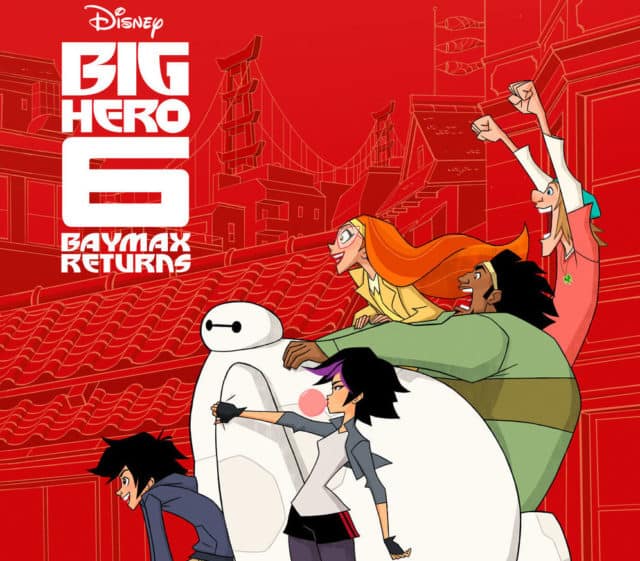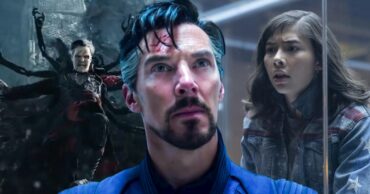
In 2015, Disney’s Big Hero 6 won the Academy Award for best animated feature, and deservedly so. The animation was beautiful and the story explored mature themes of loss and grief. Last night, the sequel series, Big Hero 6: The Series premiered with the TV movie special, “Baymax Returns.” The special managed to capture some of the magic of Big Hero 6, stumbling in some places, but ultimately it worked to set up the rest of the series as a fun follow up to the film.
“Baymax Returns,” as the name implies, depicts the return of everyone’s favorite healthcare robot. After some time adjusting to both the loss of Tadashi and Baymax, Hiro is finally starting his first day at “nerd school.” When looking through his brother’s old lab, Hiro discovers Baymax’s personality chip, a recreation of the final scene of the film, and decides to rebuild him in secret. His secrets get him in trouble with a new crime movement involving Yama (the bot fighter from the film) and a mysterious new villain. Meanwhile, Fred is trying to get the superhero team back together to patrol the streets of San Fransokyo. His annoying persistence ends up proving useful however, as the newly branded “Big Hero 6” manage to save Hiro and Fred, stop a wave of evil Baymax copies from destroying the city, and prevent the series’ new villain from obtaining a mysterious and powerful element.
The premier of Big Hero 6: The Series does a lot of good, but its biggest flaw is that it is weighed down by the transition from film to series. It’s not just the animation style, from 3D to geometric 2D, which is jarring, but easy to get used to. No, the bigger issue is that “Baymax Returns” is clearly a transition from the emotional heart of the original film into a villain-of-the-week superhero cartoon. There’s nothing wrong with this kind of superhero cartoon, and it fits perfectly for a continuation of the film, but the transition isn’t handled as well as it could have been.
For one thing, there’s a lot of back-and-forth and flip-flopping with characters. Gogo, Wasabi, and Honey Lemon’s thoughts on re-forming their superhero team switch between “it was a one-time thing” and answering the call to action. The new dean of the San Fransokyo institute of technology can’t seem to decide if she’s no-nonsense or a rule-breaker. Hiro’s motivations/priorities are pretty unclear too, is he trying to avenge his brother, live up to him, or follow in his footsteps.
However, in the end, the team decide the city needs protecting, the Dean’s personality is more solidified, and Hiro learns to find a balance between living up to Tadashi and doing his own thing (as well as being a hero on top of it all). This is where the premier succeeds, it stumbles in the transition from Disney movie to superhero cartoon, but once it gets there, everything is in place and we can see the direction the series will take. Sure, Big Hero 6: The Series might not be exactly like the film, but that can be a good thing.
Most modern cartoons, especially superhero cartoons, are action comedies, and Big Hero 6: The Series seems to be heading towards this direction. And again, “Baymax Returns” stumbles in this aspect, trying a bit too hard to bring in the laughs. Fred is perhaps the most annoying attempt at comic relief, but characters like Aunt Cass and Baymax still bring some genuinely funny and touching moments. Overall, however, there is still an emotional groundwork to the story, laid down by both the original film and “Baymax Returns.”
“Baymax Returns” might not be the best premier for the series, but it did pretty good with the tough transition from film to series. The mature themes and emotional core might take a backseat to fun superhero action, but Big Hero 6: The Series has a lot of promise.
 Follow Us
Follow Us





